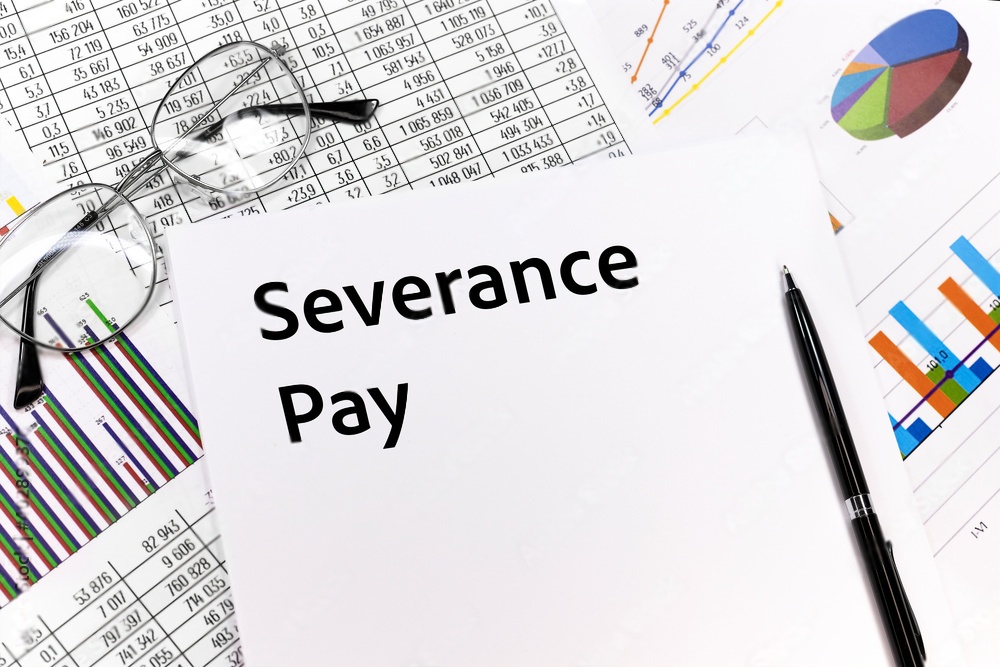While the topic of getting severance pay after terminating a professional relationship can be sensitive for some, it’s important to ask the question, “What does severance mean on paystub?”. This is to ensure the requirements have been met and to understand how your compensation and benefits appear on your paystub. Let’s dive in.
What this article covers:
- What Is a Severance Agreement?
- How Severance Pay Is Calculated
- How Is Severance Reflected on My PayStub?
- Is Severance Pay Taxable?
What Is a Severance Agreement?
A severance agreement, often referred to as a “separation agreement” or “exit agreement,” is a legal document that clarifies the conditions under which an employment relationship ends.
Think of it as a mutual understanding between an employer and an employee, ensuring that both parties know their rights, responsibilities, and entitlements during this often challenging period.
Sometimes, severance agreements are used during unforeseen employment terminations like layoffs, company restructuring, or job eliminations. But why are they so critical?
For starters, they protect both the employee and the employer. The employee gains clarity on what to expect regarding compensation, benefits, or even references. At the same time, the employer can reduce the risk of potential legal disputes or misunderstandings.
Is My Employer Required To Give Me Severance Pay?
In our experience, there isn’t a universal requirement for employers to provide severance pay. It often depends on company policy, employment contracts, or union agreements.
Through trial and error, we discovered that tools like Check Stub Maker can help you understand the nuances surrounding severance pay.

How Severance Pay Is Calculated
The calculation depends on various factors, including company policies, the employee’s position, service length, and standing contractual agreements. Here are some standard methods and examples to shed light on how severance pay can be determined:
Fixed Week/Month Method
Many companies opt for a straightforward calculation based on the employee’s tenure. For instance, an employer may offer one week’s worth of salary for every year the employee has served.
For example, if you’ve been with a company for 8 years and earned $1,000 weekly, your severance package using this method would be $8,000 (8 years x $1,000).
Position-Based Calculation
In some organizations, the severance pay might differ based on position. Senior executives might receive more significant severance than mid-level managers or entry-level staff due to the nature and responsibilities of their roles.
For example, if you’re a C-level executive with a monthly salary of $20,000, you might receive a 6-month severance package totaling $120,000. In contrast, if you’re a manager earning $5,000 monthly, you might receive a 3-month package of $15,000.
Hybrid Approach
Some companies use a hybrid approach involving tenure and position to calculate severance pay. For instance, they might provide two weeks’ salary for every year served for entry and mid-level employees and three weeks’ pay per year for senior roles.
For example, if you’re a mid-level manager with a decade of service who earned $1,500 weekly, you would receive $30,000 (10 years x 2 weeks x $1,500). But if you’re a senior executive with the same tenure, you would receive $45,000 (10 years x 3 weeks x $1,500).
Cap On Severance
Certain companies might have a cap on the total amount of severance pay, irrespective of tenure or position, to manage their financial obligations.
While doing your severance calculations, you might also come across various terms on your pay stub. For instance, if you’ve ever questioned, ‘What does TPAF contributory insurance mean on a pay stub?’, it’s a term related to contributions towards pension insurance, which could also impact your eventual severance agreement.
While severance pay calculations might seem intricate, knowing the basics and the methodology your company adopts can provide a clearer picture of what to expect.

How Is Severance Reflected on My PayStub?
The severance amount might be listed separately or alongside other earnings on your paystub. We recommend constantly checking your paystub’s earnings section or a dedicated “other payments” section.
For example, if you received severance pay, you might see it referred to as ‘Severance’ or ‘Termination Pay’ on your paystub, making it easy to differentiate from your regular earnings.
Is Severance Pay Taxable?
Severance pay, like any other form of income, is taxable. Think of it this way: It’s the compensation you receive for your service or tenure at a company. Just because it’s handed out in a lump sum or under different circumstances than your regular paycheck, sadly, doesn’t exempt it from taxation.
Is Severance Pay Taxed At A Higher Rate Than Regular Wages?
Our findings show that severance pay isn’t necessarily taxed at a higher rate than regular wages. Still, it might push your total income into a higher tax bracket for that period, leading to higher withholding, so chat with us at CheckStubMaker if you need extra clarity on your pay stub.
Conclusion
When it comes to severance pay, understanding how it appears on your paystub is crucial for your financial health. Terminating a professional relationship is never easy, but we’ve found that using tools like a check stubs generator by Check Stub Maker simplifies severance payments and deductions and provides clarity on each party’s responsibilities in the process.
Whether you’re wearing the entrepreneurial hat or managing payroll duties for smaller firms, our user-friendly system helps you make paystubs efficiently, ensuring that you have clarity on your earnings and deductions.
We believe in transparent and fair payroll processes, and we are here to support you every step of the way!
If you want to learn more, why not check out these articles below:
- Are Paystub COPE Fees Deductible
- HIMEDCR In Pay Stub
- SS Pay Stubs Direct Deposit
- STD 100 Pay Stub
- What Is Retro an a Pay Stub
- Pay Stub Says Tax Blocked
- NC AWD On Paystub
- What Is Control # on a Pay Stub
- Avail Floating H Mean on My Paystub
- Work Paystubs
- Electronic Pay Stubs
- Modern Paystubs
- When Are Paystubs Available?
- Advanced Pay Stub Maker
- How Do I Get a Pay Stub for My Social Security Check?




